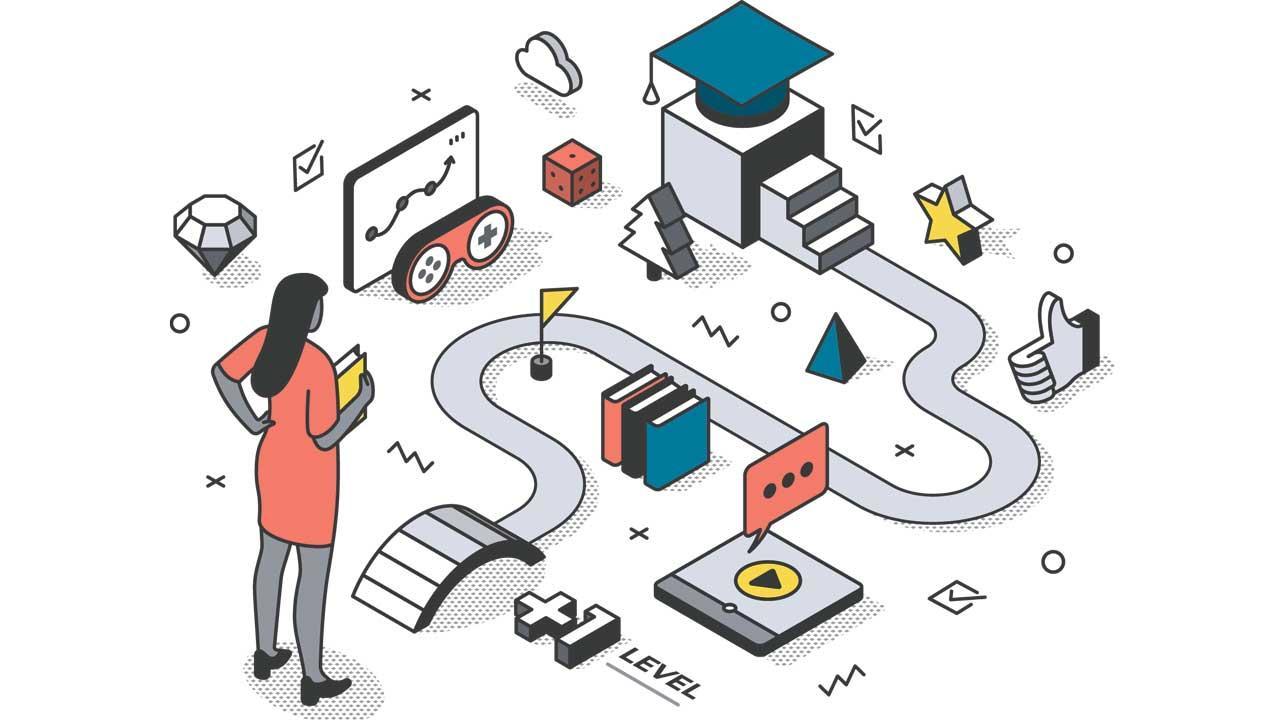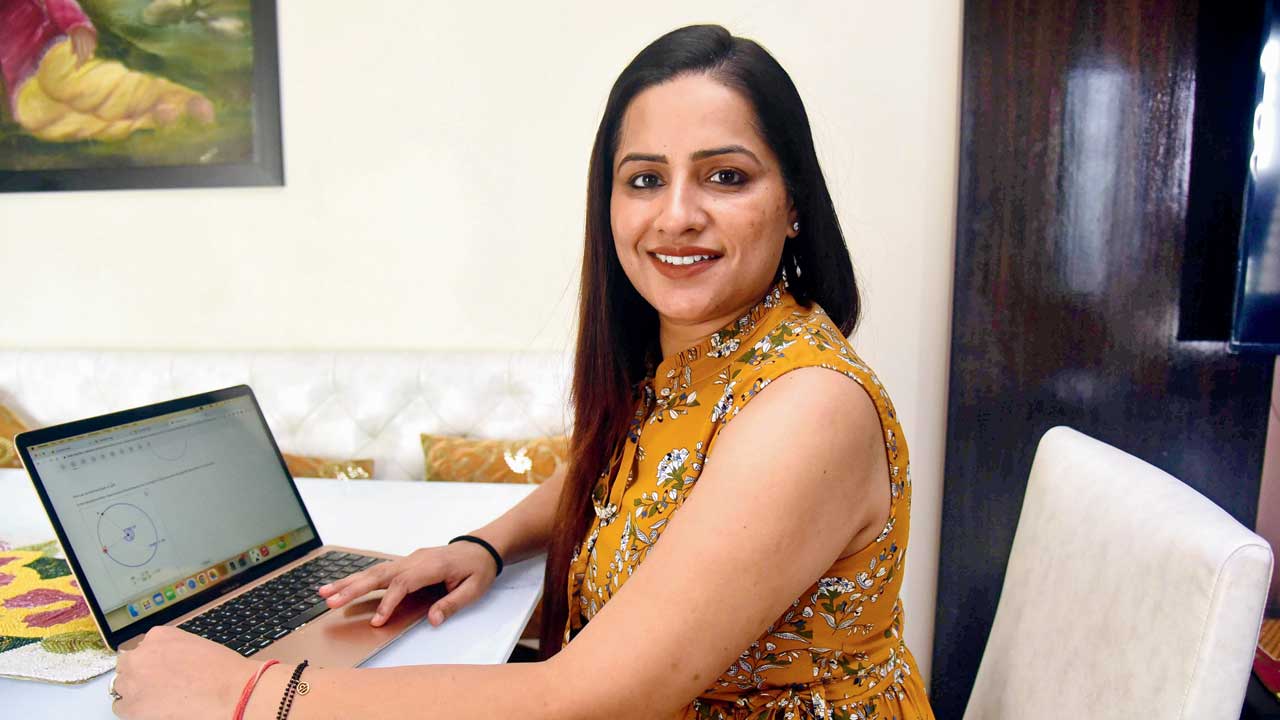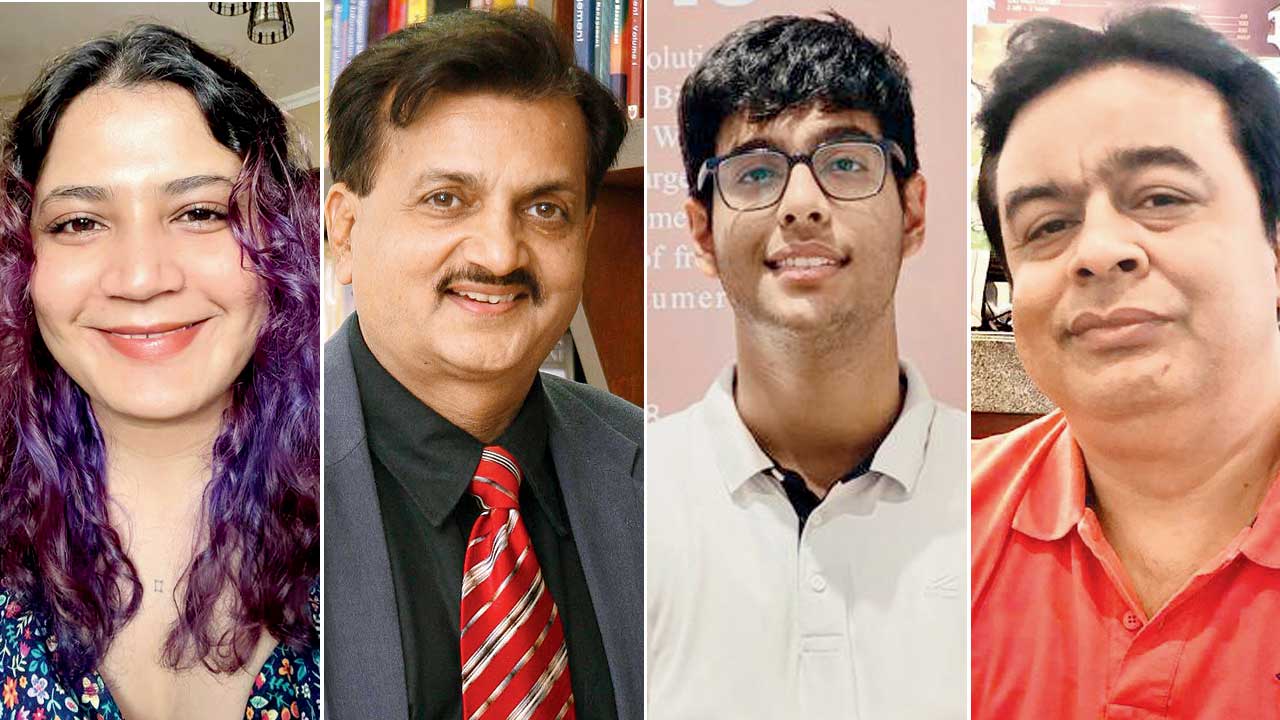Gamification of education, via apps, has simplified complex concepts ranging from Math equations to language conventions that would otherwise be difficult to grasp

Illustration/Uday Mohite
A reflex angle is more than 180 degrees and less than 360 degrees—this statement might take you back to your classroom days, with the math teacher drawing the angle on the black-board. It might even refresh the effort taken to get the concept right. Today, educational apps use visuals via simulations and more, to explain simple to difficult concepts like these, and are remarkably similar to video games.
ADVERTISEMENT
The gamification of education has become an integral part of the teaching process, especially since students and avid learners were cooped up in their homes over the past few years, with no access to the traditional classroom setup.
As a result of the isolation, gamified learning has become an important go-to tool, as observed by Dr Pravat Kumar Jena, Assistant Regional Director, IGNOU Regional Centre, Bhubaneswar, Jena mentioned it in her research article published a few months into the lockdown (July 2020), titled, Impact Of Pandemic COVID-19 On Education In India, that, 32 crore learners stopped in India could not access education.
 Geetika Jand, Teacher, Cuemath. Pic/Shadab Khan
Geetika Jand, Teacher, Cuemath. Pic/Shadab Khan
What is gamification of educational content? The use of design elements from the gaming world to teach concepts difficult to visualize, for example, What is the circumference of a circle, or how does an isosceles triangle look like?
Many educators like Anil Somani, the chairman of FOSTIIMA Business School, feels that these gaming elements help students grasp difficult concepts as the brain categorises learning to gaming and gives a hit of dopamine every time a student learns or solves a problem and earns badges. “Within the EdTech realm,” he says, “there have been studies which show that the brain works in harmony with gamification and that it triggers the release of dopamine, which gives players an increased feeling of motivation and enjoyment. With the rise of gamification, many educational technology companies have started to incorporate game-like features into their platforms to enhance the learning experience. This includes features such as point systems, leader boards, badges, and rewards that motivate and engage students to keep learning. They help facilitate encoding and retrieval of information more effectively, making the process much more efficient and engaging.”
EdTech has seen its fair share of research, such as that by psychologist Matthew WG Dye, C Shawn Green and Daphne Bavelier in 2009, resulting in the paper,
Increasing Speed of Processing with Action Video Games. It found that gamers tend to be fast learners, and said, “Playing action video games—contemporary examples include God of War, Halo, Unreal Tournament, Grand Theft Auto, and Call of Duty—requires rapid processing of sensory information and prompt action, forcing players to makes decisions and execute responses at a far greater pace than is typical in everyday life. During game play, delays in processing often have severe consequences, providing large incentive for players to increase speed. Accordingly, there is anecdotal evidence that avid game players react more readily to their environment.”
 Pooja Salvi, Duolingo USE; Anil Somani, Fostiima Chairman; Byju’s user, Akash Pathak and Vikas Kakwani, Aas founder
Pooja Salvi, Duolingo USE; Anil Somani, Fostiima Chairman; Byju’s user, Akash Pathak and Vikas Kakwani, Aas founder
One of the few people who has been welcoming the use of gaming concepts into the EdTech space is avid gamer and CEO of All India Gaming Federation, Roland Landers. He feels that there has been a shift in the conversation about gaming in India as a whole, but is glad that parents, who earlier were averse to gaming, now understand the real-life benefits for children. “A gamer is usually good at picking up concepts faster than those who do not play games,” he says, “Say someone who plays Call of Duty will understand a visual concept even outside of gaming almost immediately. Usually, those who have been gaming since they were kids are fast-learners.” He welcomes the gamification of learning because “earlier no one took the form of gaming seriously, but now parents themselves are encouraging children to use these apps to learn math and science, because it’s faster to absorb information when presented this way.”
Vikas Kakwani, founder of AAS Vidyalaya which works with providing online learning in rural India, believes that simulations and graphics are a natural progression of good teaching methods. “I recall learning difficult concepts with the help of acronyms. I am able to retain that sequence till date, and that is what apps like these do. They enable good teachers to impart ideas in an innovative and interactive way. The end goal for those who truly want to teach and learn is to learn in the most effective way, and these apps are doing that. Additionally, they give you the advantage of never missing a class!” he chuckles.
Back to reflex angle, Geetika Jand is a senior math tutor at Cuemath an app that has only mathematics on its platform, with over 12 years of experience in education. “I can explain the concept using simulations,” she says, “and if the student is particularly weak, we can even customise the plan and s/he will get a more hands-on approach as well. As an educator, I see no downside to online education.”
Pooja Salvi, a writer based out of Bengaluru uses Duolingo and Readle apps; the former as a brush-up tool to go with her offline German classes, while the latter is an app version of the classic English grammar text book Wren and Martin. “German is like Indian regional languages in terms of personal pronouns,” she explains, “They don’t have only ‘you’ or ‘me’. So I use Duolingo’s audio option to replay pronunciation and practice. Readle is a great way of exercising
English grammar.”
Aditya Pathak, a Calss X student, attended his first class on Byju’s in the first week of April, and is prepping to enroll into his dream college—Shree Ram College—in Kolkata. “The app is just fantastic,” he says, “at first, they play a recording of the simulation video guided by a teacher that explains a Math concept. Then another teacher, in real time, explains the concept further and addresses doubts.” Recently they have switched to a hybrid system—a teacher plays and explains a video in a physical classroom.
With competitive exams becoming a frequent punctuation in a student’s life, every Jack and Jill could do to play, and work, a bit more.
Also Read: Critics debate over NCERT's deletion of history chapters on Mughals empire
 Subscribe today by clicking the link and stay updated with the latest news!" Click here!
Subscribe today by clicking the link and stay updated with the latest news!" Click here!







